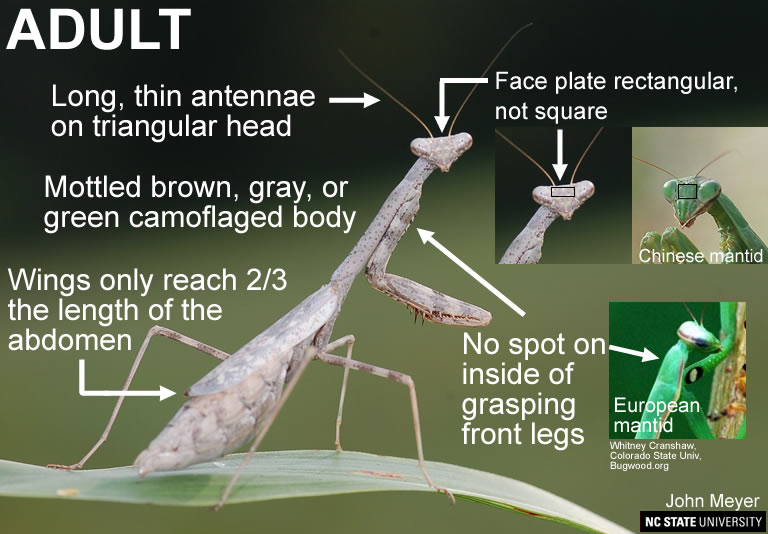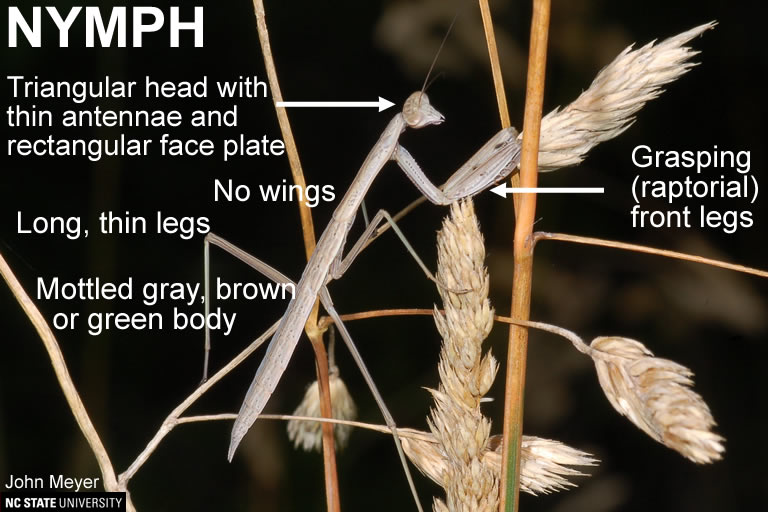Carolina Mantid
go.ncsu.edu/readext?563189
en Español / em Português
El inglés es el idioma de control de esta página. En la medida en que haya algún conflicto entre la traducción al inglés y la traducción, el inglés prevalece.
Al hacer clic en el enlace de traducción se activa un servicio de traducción gratuito para convertir la página al español. Al igual que con cualquier traducción por Internet, la conversión no es sensible al contexto y puede que no traduzca el texto en su significado original. NC State Extension no garantiza la exactitud del texto traducido. Por favor, tenga en cuenta que algunas aplicaciones y/o servicios pueden no funcionar como se espera cuando se traducen.
Português
Inglês é o idioma de controle desta página. Na medida que haja algum conflito entre o texto original em Inglês e a tradução, o Inglês prevalece.
Ao clicar no link de tradução, um serviço gratuito de tradução será ativado para converter a página para o Português. Como em qualquer tradução pela internet, a conversão não é sensivel ao contexto e pode não ocorrer a tradução para o significado orginal. O serviço de Extensão da Carolina do Norte (NC State Extension) não garante a exatidão do texto traduzido. Por favor, observe que algumas funções ou serviços podem não funcionar como esperado após a tradução.
English
English is the controlling language of this page. To the extent there is any conflict between the English text and the translation, English controls.
Clicking on the translation link activates a free translation service to convert the page to Spanish. As with any Internet translation, the conversion is not context-sensitive and may not translate the text to its original meaning. NC State Extension does not guarantee the accuracy of the translated text. Please note that some applications and/or services may not function as expected when translated.
Collapse ▲- Common Name: Carolina Mantid
- General Category: Predator
- Taxonomic Classification: Mantodea: Mantidae
- Scientific Name: Stagmomantis carolina
Description
Mantids are captivating, almost iconic insects that are easily recognized by their specialized (raptorial) front legs which they use to grasp prey. The Carolina mantid is a relatively common native species that may be harder to spot than other mantids because of its camouflage coloration . The two most similar, commonly encountered mantids in the eastern U.S. are the non-native Chinese and European mantids, that can both be easily distinguished from the Carolina mantid.


Identification
Review the images for tips on how to identify these predators.
Adults
All mantids are easily distinguished by their specialized front legs which they use to grasp prey. Carolina mantids have a face plate that is more rectangular than square(as in Chinese mantids), their wings of adults only cover about two thirds of their abdomen (wings cover all of abdomen in Chinese mantids). Usually mottled gray, brown or green color. They do not have a large spot on the inside of the front legs near the body (as in European mantids). Carolina mantids are small (2 inches) compared to Chinese or European mantids.
Larvae
Again, the face plate is rectangular, they are mottled gray, brown or green, and they do not have a leg spot.
Value in Pest Management
Carolina mantids have no demonstrated value in pest management. Like other mantids, they are non-selective in their eating habits and are ambush predators, so they do not actively seek out insect pests. Because of their smaller size, their diet is focused on smaller organisms, primarily arthropods. They are not sold commercially.
Origin and Distribution
Native. Most commonly found in southeastern United States.


